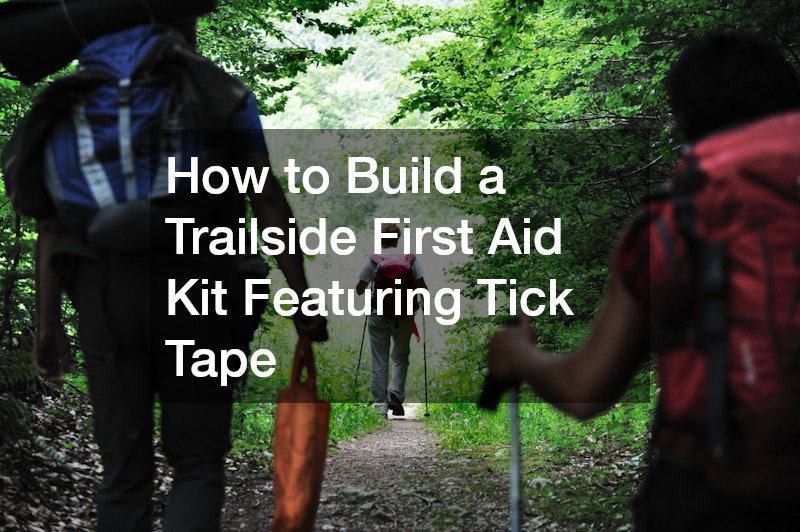How to Build a Trailside First Aid Kit Featuring Tick Tape
Venturing into nature is one of life’s great pleasures—but it’s not without its risks. Whether you’re hiking wooded paths, setting up camp, or exploring unfamiliar terrain, the possibility of injuries, bug bites, or encounters with ticks is always present. That’s why a well-stocked first aid kit is essential. One often-overlooked item that’s incredibly versatile in the outdoors? Tick tape. This compact and multi-purpose adhesive tool can play a crucial role in emergency preparedness.
Let’s explore how to build an effective trailside first aid kit that includes this powerful product from Lint Busters.
The Role of Tick Tape in Outdoor Safety
Tick tape is more than just a lint removal accessory. Its high-quality adhesive properties make it excellent for pulling ticks off the skin or clothes—an important task when you’re in areas with dense foliage or tall grass. But its utility goes well beyond pest control. Tick tape can serve multiple functions in a first aid context, making it an essential addition to any outdoor adventure kit.
Must-Have Items for Your Trailside First Aid Kit
Before looking at how to use tick tape in various emergency scenarios, it’s important to understand what a complete first aid kit should include. Here are some recommended basics:
-
Adhesive bandages: To cover small cuts, blisters, and scrapes.
-
Gauze pads and sterile tape: For covering larger wounds.
-
Antiseptic wipes or spray: To clean wounds and reduce infection risk.
-
Pain relievers: Such as ibuprofen or acetaminophen for aches and inflammation.
-
Emergency blanket: To prevent hypothermia or treat shock.
-
Tweezers: For removing splinters or assisting in tick removal.
-
Hydrocortisone cream: For soothing insect bites or skin irritations.
-
Tick tape: For both tick removal and emergency fixes (more on this below).
How to Use Tick Tape in Your First Aid Setup
1. Keep It Handy and Visible
When assembling your kit, store tick tape in a spot that’s easy to access—like a mesh pocket or a waterproof pouch. You never know when you’ll need it, and seconds count in a trailside emergency.
2. Remove Ticks Effectively
In wooded or grassy areas, ticks can attach to exposed skin before you even notice. If you spot one early, use tick tape to gently press onto the tick and pull it straight off the skin. The adhesive helps grip the tick’s body, reducing the risk of leaving any part behind and minimizing irritation or infection.
3. Temporary Wound Dressing
Though not a substitute for medical tape or proper bandages, tick tape can serve in a pinch. If you run out of medical adhesive or need to reinforce a gauze pad, tick tape can hold it in place long enough to get help or make your way back to camp.
4. Improvised Fixes for Gear and Limbs
From torn backpack straps to broken trekking poles, outdoor gear can fail when you least expect it. Tick tape can provide temporary repairs—securing items until you can fix them properly. In more serious situations, you can also use tick tape to help stabilize fingers or small limbs by securing them to a splint made of sticks or other materials.
Final Thoughts: Stay Safe with Tick Tape at Your Side
Outdoor adventures are unpredictable, but that doesn’t mean you can’t be prepared. A smart, versatile first aid kit gives you peace of mind and the tools needed to handle minor emergencies. Including tick tape from Lint Busters expands the utility of your kit without taking up much space. From tick removal to trail repairs, this compact adhesive roll might just become your most relied-upon hiking companion.

